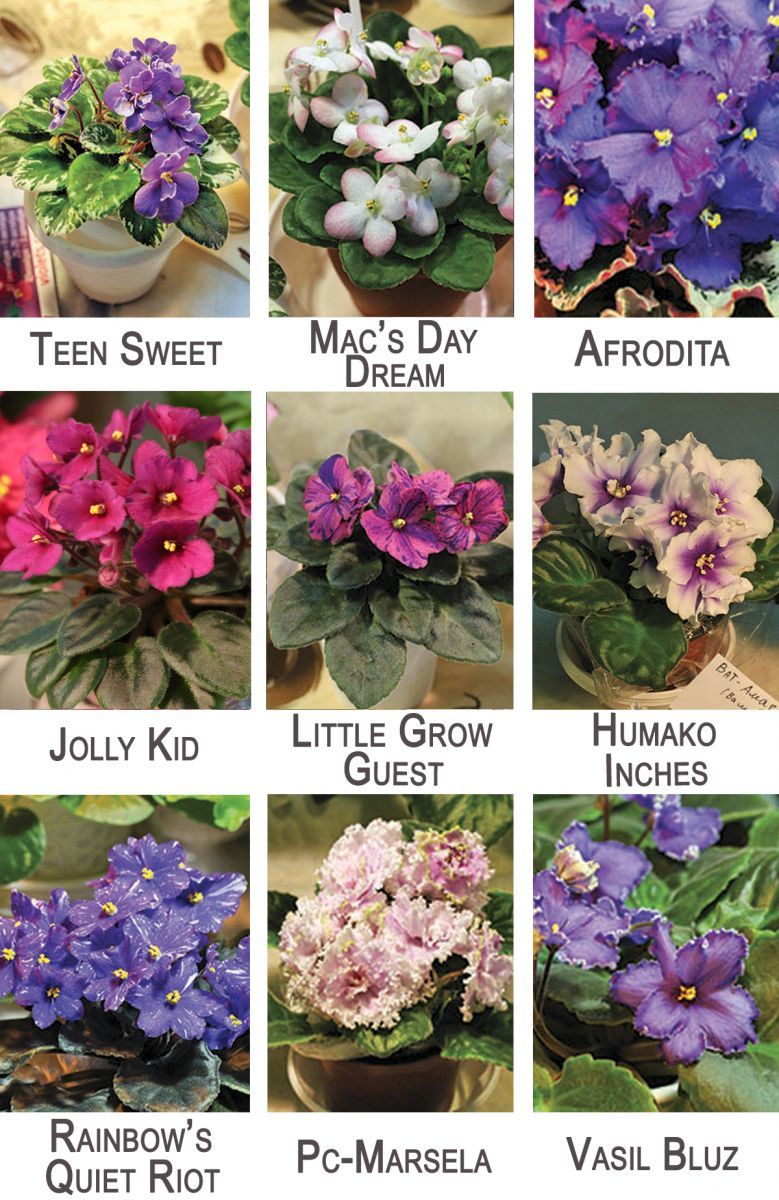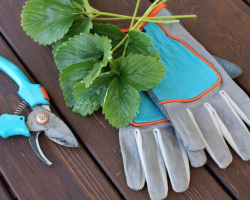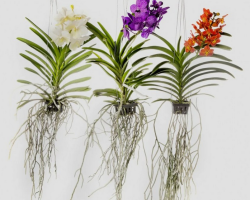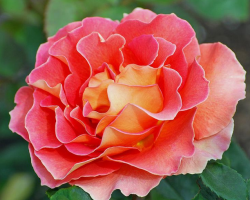“There are no violets a lot”-once said one big lover of indoor flowers, installing another pot on the windowsill with this seemingly rather unpretentious plant. And at the same time complained that some violets, despite the courtship intensive, refuse to let the color.
Content
Why don't violet bloom? There are several reasons for this, and it will be discussed in this article.
When do violets begin to bloom?
- Violets have long become the usual "inhabitants" of the window sills of our apartments and houses. However, they could rightfully be called "immigrants", because their homeland is East Africa. These, delighting the eyes with their eight or named-mixed flowering, plants are called Uzambara violet or Senpolia.
- They can be like monochrome, and multi -colored - In Russia alone, there are more than 200 species. African climatic conditions are much more suitable for them than Russian. Therefore, the conditions that are as close as possible to the tropical on the windowsill should be arranged on your windowsill. And then they will bloom for a long time-to the joy of fans-flower growers.

- You should not panic ahead of time, if violets do not bloom for some time, because the young Senpolia will need to grow for about a year before the first buds appear. Older flowers and relax it is necessary to rest from time to time, this usually happens from the last month of autumn to February - During this period, deciduous mass increases with plants.
- Contrary to the common opinion about the unpretentiousness of violets, this is far from the case. If you want them to bloom all the allotted time for this, you will need proper care for them.
Without enough light, heat, high humidity and fertilized soil, violets do not bloom or bloom poorly.
Violets do not bloom: how to force to bloom?
In order for the violet to bloom, the necessary conditions should be created for it. How to do this and what should be done first of all - read on.
Lighting for violets
- Take a look at her leaves. If they are in high condition and, as it were, stretch out towards the light, this means that you misinterpreted a place for a flower pot.
- Violets need good lighting. But also remember that they also do not need to put them on the sun itself, because delicate violet leaves can quickly burn under direct sunlight.

- For Senpolia the best suited northern, northeast or northwest sides At home, and then they will be illuminated by life -giving, but not burning the rays of the sun.
- Correct lighting of violets with lamps is also correct. He will help the violet very quickly and correctly form his outlet and with uniformity to pull out his leaves around the perimeter of the pot. In case of incorrect lighting, they seek to turn around to the light source, and then the plant can become “one -sided”.
- Half a day will be required in order to provide violets with the lighting they need. If you live in a cold climatic belt, then you will need combining natural and artificial lighting.
Feeding for violets
- File feeding for flowering is carried out with special fertilizers, which can be purchased in any floriper store. Frequent top dressing are necessary for violets, but you should not overdo it either.
- Excess nitrogen and potassium, With all their undoubted advantages, they can adversely affect the formation of flowers, as well as the growth and quality of the plants themselves.
- Therefore, when your violets only begin to throw out the color, they should be fertilized every 7 days. If you use some kind of universal top dressing for all types of indoor colors, then in this case, the dose indicated on the packaging decreases half - but this, as you know, is only for violets. Choose liquid top dressing and apply them when watering.

How to water violets at home?
- The violet violet from improper watering can not only refuse to bloom at all, but even die: the lack of moisture will lead it to drying, and an oversupply - to decay of the roots. This requires a measure, in addition, the amount of water should always be unchanged - both during flowering and during the rest of Sinpolia.
- In no case do not water the violet with water, immediately taken from under the tap. She should stand up in the room before this day.

For watering violets, you can use 4 ways:
- first way: A potter is filled with water, while the plant is absorbed by the plant with the plant. The liquid unclaimed violet should be periodically poured, otherwise, due to closing the soil, it may stop throwing color;
- the second method: A pot with a violet for a short time is put in a wide vessel with water. After the flower is sufficiently “drunk”, it is taken out of the pelvis and returned to a “permanent place of residence”.
- third way: The flower is traditionally watered on top. At the same time, we must try to pour water to the very root so that the outlet and leaves are not very moisturized - this can lead to plant disease.
- fourth way: We are talking about modern fittile watering. This is one of the most painstaking and energy -consuming methods that it is convenient to use flower growers with a large number of violets. While the plant has not yet been planted, on top of the drainage placed on the bottom of the flowerpot, a narrow fit from the cord should be put. From one end of the rope a kind of ring is made, which is laid on the drainage, and the second stretches out through the lower slot of the flower pot. Next, it remains to be poured into the pot, plant a flower in it and put on a container with water (there should be a lid on it), into which the wick is lowered. This will do everything so that the plant cares about yourself, but you need to not forget to add water into the lower container.
The temperature for violets
- Room temperature should not drop below year -round +15 ° C. March is an especially important month for violets, because it is at this time that they begin to prepare for long -term flowering and stormy growth. It is unusually important to monitor the mark on the thermometer in early spring, because with sharp temperature jumps and excessive coolness you can force the violet scanty to bloom or not throw the colors at all.
- Under natural conditions, violets settled on the shore of reservoirs, which provide air with high humidity. In the apartment, you can also come up with a sort of violets for your violets artificial "Lake". Put a side with a pot, for example, a jar of water. And if in the room the temperature exceeds 24 ° C, you can slightly spray the leaves with a spray gun - just do not forget that the water in it should not be cold.
- If the room is cool, then you should not spray flowers. Because of this, leaflets can be covered with ugly white spots, and the plant itself refuse to bloom.
- The most optimal air humidity for Senpolia is 50%.

Soil for violets
- Violets grow well and bloom in loose light soil, at the top of which moisture will not accumulate. You can fill the bottom of the flowerpot polystyrene, pebbles or expanded claywho will serve the plant as drainage.
- When planting plants, it is necessary to take care of the drainage, which prevents the water to stagnate, which is fraught with rotting of the roots.
- Too acidic soil also does not fit violets, so the upper earthen layer needs to be changed every year. The basis of the soil for violets should be taken peat, and in order to quickly not peroxy, you can from time to time bring baking powers into it like vermiculite: It is sufficiently nourished by the root system of the flower with oxygen and will not allow moisture to evaporate quickly from the soil.
- However, it is still not worth oversatuing the soil with all kinds of useful additives-they should be no more in the ground 50%, since violets will begin to develop foliage in a rapid pace, and there will be very few flowers.

What pots are needed for violets?
- Do not plant Senpolia in a spacious flowerpot - on the contrary, you should choose for it club contained. If there is too much empty space, then this flower will become its root system to increase, and for flowering it will no longer have any strength.
- Of course, over time it will bloom, but with these beautiful colors you will not be able to admire for a long time. However, too close the pot will not like this capricious plant, especially if there are stepsons around it. Occasionally seal the violets by removing the young animals that appeared from them.
- The most optimal option when choosing a tank suitable for a flower is a small, compact pot, which will be 3 times less than a rosette in diameter.

- An adult flower with medium sizes is perfect for a 200 ml flowerpot. To give stability, a small pot with a violet can use a special weighted stand.
- Think about what material you would like to purchase a flowerpot for your violet from. Those gardeners who have been raising Senpolies for several years have been engaged in the conclusion that plastic pots - The best for them is the best for them, since in their bottom are holes in sufficient quantities for the output of excess moisture.
- In clay vessels, this process is slowed, because of which the soil can get wet, and this is a direct road to rotting the roots of the flower.
How to deal with diseases and pests of violets?
Even a novice flower breeder will immediately understand that violets do not bloom due to some kind of illness or pests. In this case, traces that are left on the leaves, flowers and soil are immediately striking.
We will give you some tips on how to deal with the most popular violet diseases at home:
- If you notice that the plant has become sluggish, it means that it was not pleased with the microflora. In this case, you should purchase Fundazole And spray them with a stained violet.
- Phytopharosis manifests itself in the form of brown spots on the leaves. In this case, nothing else will help flower transplant to new soil.
- The presence of a whitish raid on the ground and leaflets announces that it settled in the pot Gray rot. This fungal disease in itself will not disappear, you can get rid of it, only carefully disinfected the soil by freezing or frying. It will also not be superfluous to apply a weak manganese solution.
- Violet leaves are covered with red spots? Most likely, your violet is attacked by the hordes of the Chervetsov, aphids or ticks. Purchase as soon as possible Aktellik or Fitoverm And spray the plant with one of these drugs. If the disease only begins, then in this case you can use a weak soap solution for washing the outlet and leaves - perhaps this measure will be enough.
- If the violet ceases to bloom, its leaflets acquire a grayish tint, and the roots are easily removed from the soil, then such symptoms may indicate the presence fusariosis. The appearance of this fungus, which affects the root system, provokes an inappropriate care for the plant (excessive moisture, cold water for watering, too heavy soil, etc.). To avoid the appearance of this dangerous aggressor, from time to time you need to fertilize the violet Pounds.

- A white plate appeared on the stalks in the form of a web? The diagnosis is known - this can not be anything else powdery mildew. It can provoke poor lighting, low air temperature or dusty room. So that this uninvited guest does not visit your violet, take preventive measures. Use a wet napkin to wipe its leaves and open the windows in the room where it is located as often as possible. You can cure a sick plant Poundozole or Benlat.

- Malicious insects can be easily destroyed by insecticide, the most effective of which, in the opinion, both the florists themselves and scientists - Intavir.
We advise you to read interesting articles about violets:
- Signs about violet
- Is it true that violets on the windowsill destroy personal life
- Own violets: landing, transplanting, care
- The lunar calendar of violets







